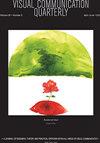Concrete or Abstract? The Effects of Picture Concreteness and Mental Illness Prevalence on Destigmatizing Mental IllnessesAbstract
IF 0.4
Q4 COMMUNICATION
引用次数: 0
Abstract
AbstractThis study investigated how picture concreteness (cartoon versus photo) and mental illness prevalence level (high versus low) in mental health messages influence mental illness stigma via a within-subjects online experiment (N = 92). Findings revealed that compared to cartoons, photos elicited greater empathic closeness, decreased social distancing intention (especially for the low-prevalence mental illnesses schizophrenia and bipolar disorder), and increased intention to support mental health policies. Compared to photos, cartoons increased comprehension (especially for the high-prevalence mental illnesses depression and anxiety) and reduced personal responsibility for mental illness. Messages about high prevalence mental illnesses compared to low prevalence mental illnesses elicited more empathic closeness, lower social distancing intention, and higher message dissemination intention. (113 words)DisclaimerAs a service to authors and researchers we are providing this version of an accepted manuscript (AM). Copyediting, typesetting, and review of the resulting proofs will be undertaken on this manuscript before final publication of the Version of Record (VoR). During production and pre-press, errors may be discovered which could affect the content, and all legal disclaimers that apply to the journal relate to these versions also. Additional informationNotes on contributorsRoma SubramanianRoma Subramanian (Ph.D., Journalism, University of Missouri) is an assistant professor in the School of Communication at the University of Nebraska Omaha. She is also an affiliate faculty member in the university’s medical humanities program and the Goldstein Center for Human Rights. In 2021, she was inducted into the University of Nebraska Medical Center (UNMC)’s Interprofessional Academy of Educators. She currently serves as secretary for the Communicating Science, Health, Environment, & Risk (ComSHER) division of the Association for Education in Journalism & Mass Communication (AEJMC). Her research and teaching focus on health communication, particularly regarding stigmatized issues (e.g., mental illness, sexual abuse). Other areas of interest include the impact of social and mobile media on health, the dynamics of patient-physician communication, and the intersection between art and health. Her research has been published in peer-reviewed journals such as Health Communication, Health Education & Behavior, the Journal of Visual Communication in Medicine, and Critical Public Health.Sungkyoung LeeSungkyoung Lee is an Associate Professor of Strategic Communications at the Missouri School of Journalism. Her research program addresses the mediated message design and testing for effective strategic communication in the domains of health and science communications, focusing on audience information processing mechanisms to explain the message effects: the message features and content eliciting automatic resource allocation (attention), and how these features and content affect audience attitude and intention related to health behavior and scientific knowledge.Jonathan B. SantoJonathan Santo is a professor of psychology at the University of Nebraska at Omaha. He serves as director of the graduate Developmental Psychology program and associate director of the Office of Latino/Latin-American Studies. Most of his research focuses on the impact of peer relations on child and adolescent development, with emphasis on the importance of friendships as a source of social support. Santo also studies cultural differences in factors related to self-esteem as well as classroom-level influences. Ultimately, his research is aimed at improving the lives of children and adolescents by fostering supportive school environments and encouraging positive peer relationships.Shinobu Watanabe-GallowayDr. Shinobu Watanabe-Galloway is a professor in Department of Epidemiology at University of Nebraska Medical Center. Her research focus areas include mobile app interventions and colorectal cancer screening interventions.具体的还是抽象的?图片具体性和精神疾病患病率对精神疾病污名化的影响
摘要本研究通过被试在线实验(N = 92)探讨了心理健康信息中的图像具体性(漫画与照片)和精神疾病流行程度(高与低)对精神疾病污名化的影响。研究结果显示,与漫画相比,照片引发了更大的共情亲密感,降低了社交距离的意愿(特别是对于低患病率的精神疾病精神分裂症和双相情感障碍),并增加了支持精神卫生政策的意愿。与照片相比,漫画提高了人们的理解力(尤其是对高患病率的精神疾病抑郁和焦虑),并减少了个人对精神疾病的责任。与低患病率的信息相比,高患病率的信息引起了更多的共情亲密,更低的社会距离意愿和更高的信息传播意愿。免责声明作为对作者和研究人员的服务,我们提供这个版本的已接受手稿(AM)。在最终出版版本记录(VoR)之前,将对该手稿进行编辑、排版和审查。在制作和印前,可能会发现可能影响内容的错误,所有适用于期刊的法律免责声明也与这些版本有关。roma Subramanian(密苏里大学新闻学博士)是内布拉斯加州奥马哈大学传播学院的助理教授。她也是该大学医学人文项目和戈尔茨坦人权中心的附属教员。在2021年,她被纳入内布拉斯加大学医学中心(UNMC)的教育工作者的跨专业学院。她目前担任新闻与大众传播教育协会(AEJMC)传播科学、健康、环境与风险(ComSHER)部门的秘书。她的研究和教学重点是健康传播,特别是关于污名化问题(如精神疾病、性虐待)。其他感兴趣的领域包括社交和移动媒体对健康的影响,医患交流的动态,以及艺术与健康之间的交集。她的研究成果发表在同行评议的期刊上,如《健康传播》、《健康教育与行为》、《医学视觉传播》和《关键公共卫生》。李成敬,密苏里新闻学院战略传播系副教授。她的研究方向是健康和科学传播领域有效战略传播的中介信息设计和测试,重点关注受众信息处理机制来解释信息效应:信息特征和内容引发自动资源分配(注意),以及这些特征和内容如何影响与健康行为和科学知识相关的受众态度和意图。乔纳森·桑托是内布拉斯加大学奥马哈分校的心理学教授。他担任研究生发展心理学项目主任和拉丁美洲/拉丁美洲研究办公室副主任。他的大部分研究都集中在同伴关系对儿童和青少年发展的影响上,强调友谊作为社会支持来源的重要性。桑托还研究了自尊相关因素的文化差异以及课堂层面的影响。最终,他的研究旨在通过培养支持性的学校环境和鼓励积极的同伴关系来改善儿童和青少年的生活。Shinobu Watanabe-GallowayDr。Shinobu Watanabe-Galloway是内布拉斯加大学医学中心流行病学系的教授。她的研究领域包括移动应用干预和结直肠癌筛查干预。
本文章由计算机程序翻译,如有差异,请以英文原文为准。
求助全文
约1分钟内获得全文
求助全文

 求助内容:
求助内容: 应助结果提醒方式:
应助结果提醒方式:


